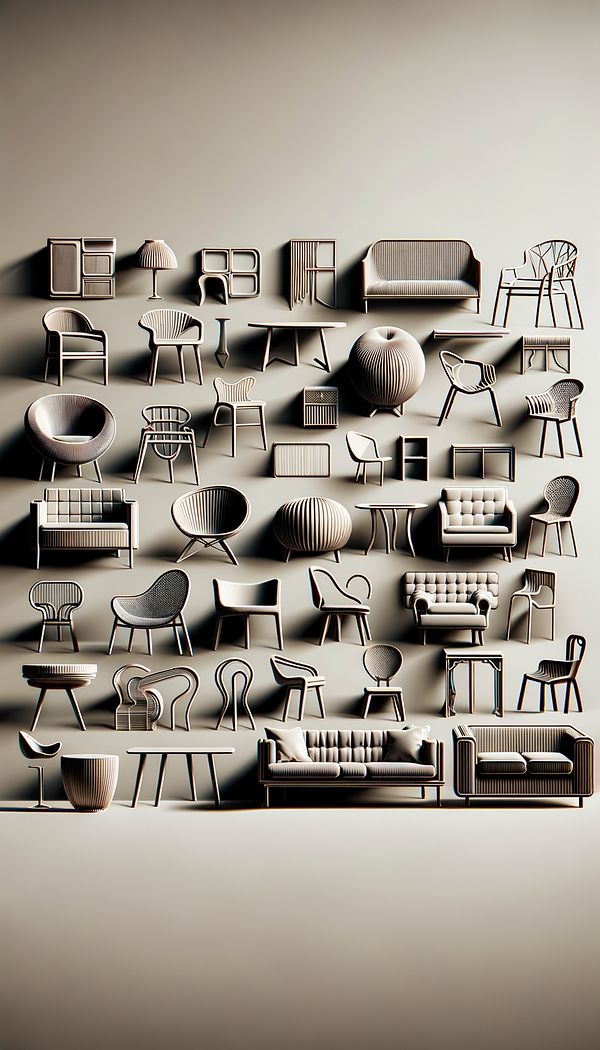What is a Silhouette?
The outline or general shape of an object.
Description
Silhouette refers to the outline or general shape of an object, showcasing its form without the distraction of details, colors, or textures. In the context of interior design, a silhouette can play a pivotal role in defining the character and style of a space. It is often used to establish a visual theme, draw attention to particular features, or create contrast and balance within a design scheme.
When selecting furniture, lighting, or decor, designers consider the silhouette of these elements to ensure they complement the overall aesthetic of a room. For example, a room designed in a minimalist style might feature furniture with clean, simple lines, whereas a more ornate, classical space might incorporate pieces with intricate silhouettes. The silhouette of objects can also affect the perception of space and scale in a room; larger, bulkier silhouettes can make a space feel more occupied and cozy, while slender, streamlined silhouettes can contribute to a sense of spaciousness and openness.
Understanding the impact of silhouettes can also guide decisions related to space planning and layout. The arrangement of furniture and decorative elements by their silhouette can lead to a harmonious or dynamic composition, depending on the desired ambience.
Usage
A designer might choose a sculptural floor lamp with a distinctive silhouette to serve as a focal point in a minimalist living room setup. In a traditional dining room, elegant chairs with curved silhouettes and intricate details may be selected to complement the opulent style of the space. In open-concept spaces, different silhouettes can be used to subtly define areas without employing physical barriers.
FAQs
-
How does the silhouette affect the mood of a room?
The silhouette of furnishings and decorative elements can significantly influence the mood of a room. Sleek, simple silhouettes tend to convey a modern, minimalist vibe, while complex, ornate silhouettes can evoke a sense of luxury and historical elegance. The choice of silhouettes can either harmonize with the intended mood or provide contrast to create visual interest.
-
Can silhouettes affect the perception of space?
Yes, the silhouettes of objects within a room can alter the perception of space. Bulky, expansive silhouettes may make a room feel more filled and cozy, whereas slender, pared-down silhouettes can make a room appear larger and airier. The strategic use of silhouettes can help achieve the desired spatial dynamics.
-
Are silhouettes important in all design styles?
Silhouettes are a fundamental aspect of all design styles. Whether a space is designed with a contemporary, traditional, eclectic, or any other aesthetic in mind, the silhouette of furniture and decor plays a key role in achieving cohesion and expressing the intended style.
Practical Application
When designing or redecorating a space, pay close attention to the silhouettes of the elements you choose. Consider the overall theme and mood you aim to create. Experiment with contrasting silhouettes to add depth and interest or use cohesive silhouettes for a harmonious effect. Utilize the power of silhouette to shape the visual and emotional impact of your space effectively.
-
Furniture Types599 articles
-
Decorative Techniques322 articles
-
Space Planning & Layout134 articles
-
Decorating Principles & Elements330 articles
-
Spade FootSpade Foot refers to a style of furniture leg that resembles the shape of a spade.
-
StencilA template used to draw or paint identical letters, symbols, shapes, or patterns every time it is used.
-
Waterfall SkirtA waterfall skirt is a continuous piece of fabric or material that drapes seamlessly from the top of a furniture item to the floor, covering its legs.
-
SettleA settle is a traditional wooden bench with a high back and armrests.
-
Bed Base/FrameA bed base or frame is the structure that supports a mattress and ensures its stability and durability.
